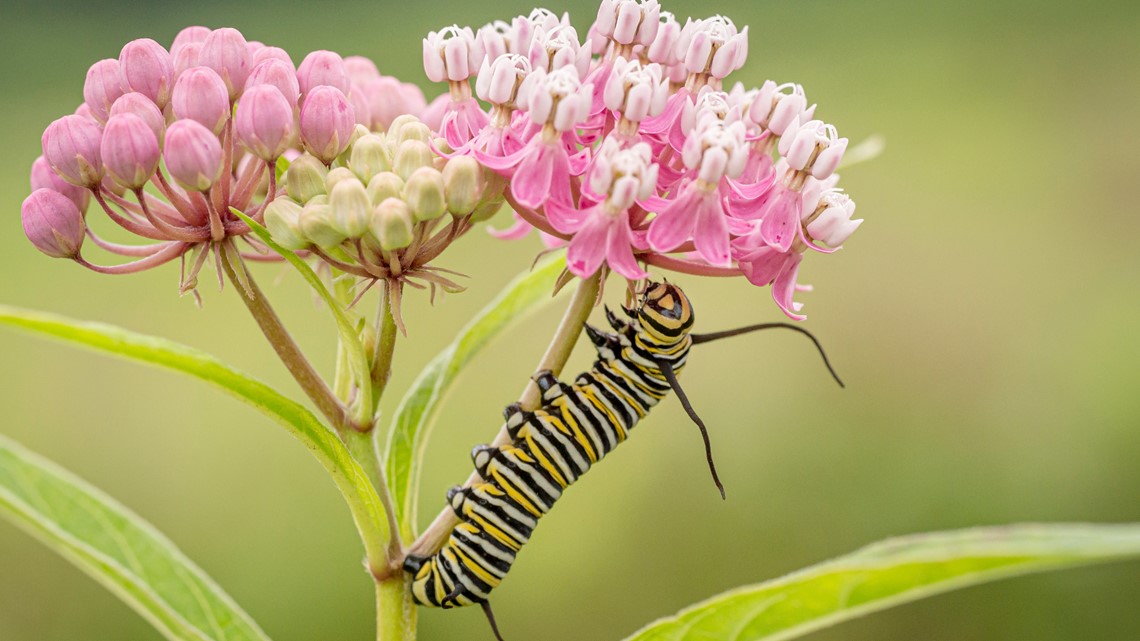MINNEAPOLIS — One of America's most iconic creatures is in danger.
The International Union for the Conservation of Nature added the migrating monarch butterfly to its "red list" of threatened species last week and categorized it as "endangered."
The group estimates that the population of migratory monarch butterflies in North America has declined between 22% and 72% over the last decade, depending on the measurement method.
Experts say there are ways you can help the iconic orange-and-black butterflies when they make their way across the country in an awe-inspiring annual migration.
Gardening for butterflies
Monarch butterflies lay their eggs only on milkweed plants -- a wildflower that's essential to their life cycle. But agriculture and herbicide use have made wild milkweed harder for monarchs to find.
Planting milkweed gives monarchs a place to lay their eggs. Another big tip? Planting other native flowers so adult butterflies can drink nectar and fuel up for their long migration.


"The key is to try to plant native nectar plants, native milkweeds, because these are plants that will do well on the landscape with less care, and they don't pose a threat to the environment," said Dr. Ray Moranz, a pollinator ecologist with the nonprofit Xerces Society.
Moranz said with more than 120 species of milkweed in America alone, gardeners have plenty to choose from. One thing to remember: When buying a milkweed plant, always ask if the nursery sprays insecticides.
"If you bring those plants home, and female monarchs lay their eggs on them, the caterpillars get killed by the insecticides," Moranz said. "So very bad deal."


The Xerces Society has a guide to finding local milkweed varieties on its website. The National Wildlife Federation has a guide to native nectar plants for monarchs.
Moranz, who has spent years making his 10-acre farm welcoming to pollinators, said it's a rewarding journey.
"You're gonna get bees, you're gonna get butterflies. Maybe you don't get (monarchs) visiting your garden the first year, but sooner or later, they're going to arrive -- and the bees and other butterflies will be there from year one."
Small efforts, big changes
There are ways to help monarch butterflies outside the garden, like local advocacy or speaking to lawmakers about national legislation for monarch conservation.
"If you're planting native wildflowers, if you're convincing your city to reduce or halt its insecticide use, then that's going to be great for monarchs," Moranz said.
Monarch butterflies face big threats -- habitat loss, increased use of herbicides and pesticides for agriculture, and the effects of climate change. But Moranz said even small efforts can make a difference.
"Small gardens that people plant don't make a difference for bald eagles or American alligators. But they can make a difference for pollinators because pollinators are really little."

